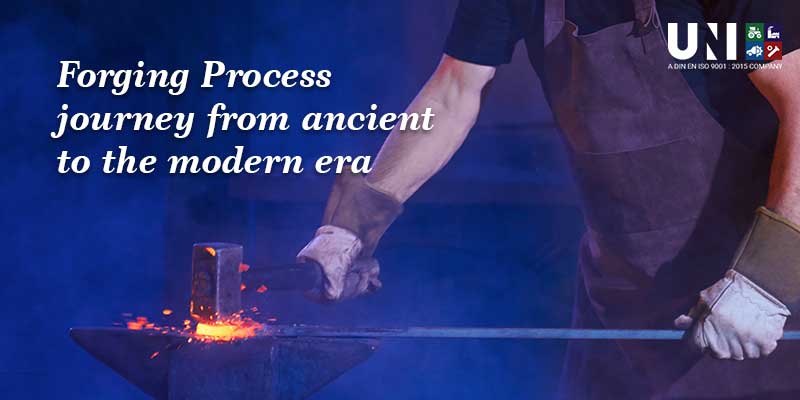Iron and steel in Ancient India
While the Indus civilization fit into the Bronze Age, its successor, the Ganges civilization, which emerged in the first millenniumbelonged to the Iron Age. Making iron by smelting iron ore was practised in ancient India. The iron and steel produced in the early days were also formed into useful articles. The predominance of iron technology in India is well recognized and there are numerous published books on the state of ancient Indian iron expertise.
Sushruta who was an authority on medical science in ancient India had described many surgical instruments in his book (third or fourth century BCE).The testimony of the craftsmanship and antiquity of the Indian iron and steel industry is visible from the iron objects belonging to the BCE period found in the burial sites at Adichinallur in Tinnevelly district in Tamil Nadu.
Some of the early iron objects found are dated to 1400 BCE by employing radiocarbon dating. Spikes, knives, daggers, arrowheads, bowls, spoons, sauce-pans, axes, chisels, tongs, door fittings etc. fluctuatingbetween 600 BCE – 200 BCE have been revealed at several archaeological sites. Iron know-how has grown progressively in ancient India and Indian iron and steel products were in great petition.
India was a major innovator in producing two advanced types of iron
India is a major pacesetter in the field, producing two highly forward-thinking types of iron. The first, wootz steel, produced in south India from about 300 BCE, was iron carbonized under controlled conditions. Transferred from the Deccan all the way to Syria, it was moulded there into ‘Damascus swords’ well-known for their acuity and durability.
This Indian steel was known as ‘the wonder material of the Orient’.Later, the Arabs shaped it into swords and other weapons, and through the Crusades, Europeans were intimidated by the superior Damascus swords. In the armouries of Golconda and Hyderabad’s Nizams, Tipu Sultan, Ranjit Singh, the Rajputs and the Marathas, wootz armaments had pride of place.
The second progressive iron is the one used in the famous 1,600-year-oldDelhi iron pillar, which, at a height of 7.67 m, involvesapproximately six tons of wrought iron. It was initially erected by ‘Chandra as a standard of Vishnu at Vishnupadagiri’In 1233, the pillar was brought to its current location in the courtyard of the Quwwat-ulIslam Mosque in Delhi’s Qutub area, where masses continue to come and see this wonder that cannot rust.
Start of the modern era
The contemporary iron and steel industry in India owes its source to the grand vision and persistence of JamshetjiNusserwanji Tata. TISCO (The Tata Iron and Steel Company) was designed as a Swadeshi undertaking and was listed in Mumbai (previously called Bombay) on 26th August 1907. Construction of the TISCO industry at Sakchi (renamed Jamshedpur) in Bihar started in 1908 with American assistance.
The first blast furnace was propelled in on 2nd December 2011 and the first ingot was rolled on 16th February 1912. The plant was initially constructed for a bulk of 160,000 tons of pig iron, 100,000 tons of ingot steel, 70,000 tons of rails beams and shapes, and 20,000 tons of bars, hoops and rods.
Forging as the future of global manufacturing factor
Forging is traditionally considered the main element of the manufacturing industry. It is major sectors that support the economic growth of our nation, such as Automotive, Industrial Machinery, Power, Construction & Mining Equipment, Railways and General Engineering.In India, forging engineering is well known globally for its technical abilities. With a fitted capacity of about 38.5 lac MT.
Grounded on their connected capacity, the forging units may be grouped as very large (capacity above 75,000 MT), large (capacity above 30,000 to 75,000 MT), medium (capacity above 12,500 to 30,000 MT), small (capacity above 5,000 to 12,500 MT) and very small (capacity up to 5,000 MT). The forging industry in India is intense around its consumer locations. Therefore, the major forging industryis found to be in the states of Maharashtra, Punjab, Gujarat, Tamil Nadu, Haryana, Delhi, Karnataka, Jharkhand, West Bengal and Andhra Pradesh.
The forging industry in Indiahas thecapability to forge anassortment of raw materials comparedto carbon steel, mixture steel, stainless steel, alloy, titanium, aluminium and so forth, as per the requirements of the user industry.Over the years, the Indian forging industry has evolved from being a labour-intensive industry to a capital-intensive manufacturing sector. The existing investment in the plant and equipment by Indian forging companies is priced INR 27,833 Crore.
The forging industry of India provides direct engagement to about 95,000 people. The small and very small units are mostlydependent on manual labour, nevertheless, medium and large units are more mechanical. Quality standards in the industry have improved suggestively and the sector is now well-known globally for its high quality.The forgings industry in India has made fastgaits and presently, not only meets virtually all the domestic mandates but has also arisen as a huge exporter of forgings.
Unispares is one of the leading forging service providers
We at Unispares India hire the best forging industrial technique to get superior products with outstanding durability and work-life. Our labs are equipped with the latest technologies and our team is skilled in these technologies to design and manufacture the best industrial components through the latest manufacturing processes. The forging process that we employ is an ideal option for applications that require performance and safety but lightweight metal too for speed and energy efficiency.We are involved in carbon, alloy, and stainless-steel forging.


